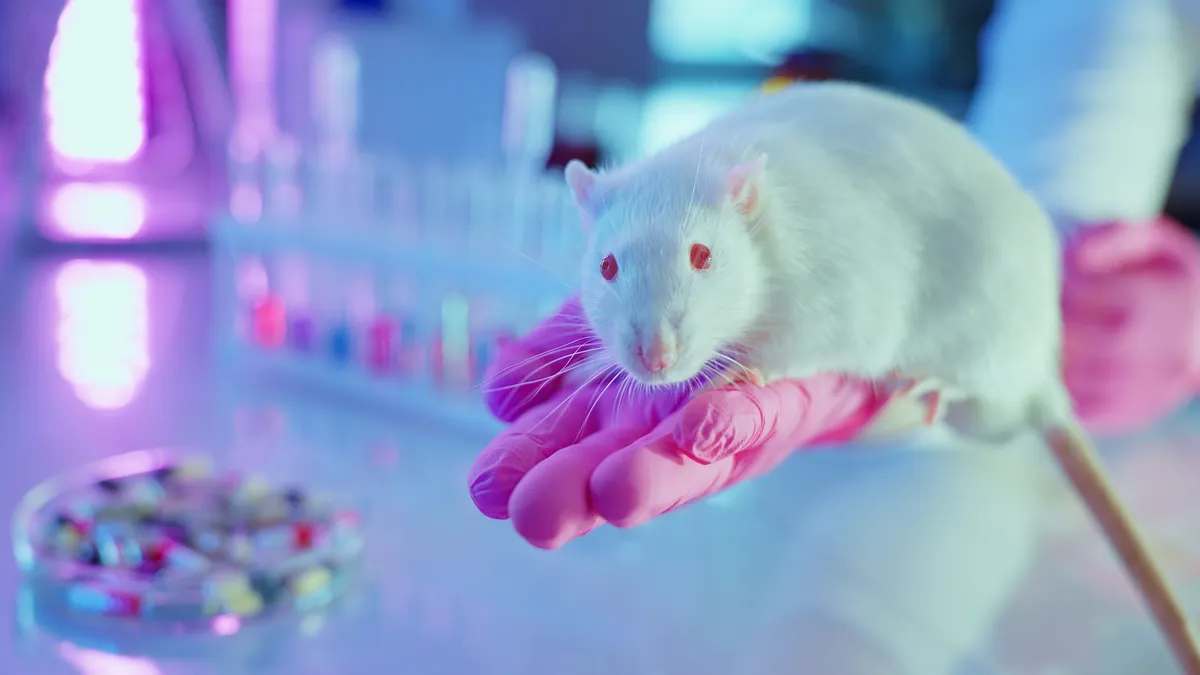Heavy is the Crown
Without a doubt talent — recruitment, retention, and engagement — is the biggest challenge our agency executives face today. At the same time, technology, ideation, shared value, and time are also top of mind.
Sharon Callahan.
TBWA\WorldHealth.
The first challenge that comes to mind is keeping the best talent. As the industry has changed dramatically over the last five years from blockbuster primary care drugs to high science oncology and rare disease drugs, we find that we can’t find enough talent with specialized experience. We’re managing the talent gap in several ways, including innovative fellowship programs, finding qualified candidates in unlikely places and bringing them into the industry, retraining existing staff, putting bright young talent with high potential on the fast track, allowing for nontraditional work arrangements, and of course our geographic diversity is a plus. We’re consistently doubling down on learning and development programs for our people, which allows them the opportunity to thrive within our agency culture. It’s not just the challenge of having enough talent; it’s keeping the agency people who we have engaged and motivated to want to stay with us. Because there are a lot of opportunities out there, as an agency we have to be our best to keep the best.
Joe Kuchta.
Sandbox.
Our biggest challenge at Sandbox — and I’m sure we’re not alone in this — is recruiting and keeping high-caliber talent. Our entire business is based on the extremely talented people who deliver every day on behalf of our clients. The stakes are high, and as we’ve grown, finding people hasn’t been hard, but finding the right skills, talent, and attitude and approach takes a lot more work — but it’s worth it.
Renee Mellas.
Area 23.
Talent recruitment continues to be a challenge in our industry. Recruiting for junior or entry-level talent has proved even more challenging due to the fact that these levels are in increasingly high demand in our industry. In an effort to solve for this, we’ve recently taken a different approach to recruitment for these levels 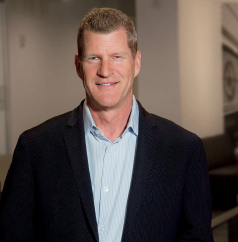 at Area 23 — and across the entire FCB Health Network — by searching for candidates on college campuses. While this is not an uncommon recruiting practice for entry-level creative talent, we have also expanded this practice to the account management discipline. Just this past year, we were able to partner with Virginia Tech University to recruit four recent college graduates as entry-level account management. To date, this has proven to be a very successful solution to bringing in junior talent.
at Area 23 — and across the entire FCB Health Network — by searching for candidates on college campuses. While this is not an uncommon recruiting practice for entry-level creative talent, we have also expanded this practice to the account management discipline. Just this past year, we were able to partner with Virginia Tech University to recruit four recent college graduates as entry-level account management. To date, this has proven to be a very successful solution to bringing in junior talent.
Ed Mitzen.
Fingerpaint.
We are a talent-based business and finding the best and brightest, no matter where they live, is a huge priority for us. Technology allows us to seamlessly integrate talent across our four locations, and we will continue to open up additional offices to capture top-tier people who believe in what we’re building.
Frank Powers.
Elevate Healthcare.
Ensuring the happiness of our most valuable resource, our team is our biggest challenge. Lots of employers talk about work/life balance, but as we all know too well, that is a tough proposition to successfully deliver in the agency world. The speed of our business demands a high level of commitment and focus to deliver outstanding work.
We feel the key is not to figure out the puzzle that is work/life balance, but rather create flexibility for our team through customizable work weeks, the ability to work remotely, and unlimited PTO. This has allowed us to create a happy culture allowing us to retain top talent.
Dr. Ahnal Purohit.
Purohit Navigation.
My biggest challenge as CEO is acquiring new talent — it’s a difficult job market for employers because we’re all competing for the same talented pool of healthcare communications professionals. What we’re doing to manage the challenge is to really tap into what our employees want and to find the common ground between what they desire and what we can offer. We also rely heavily on referrals from our employees; we’re fast-tracking those candidates with proven successful backgrounds through our interview process.
Dr. Christopher Tobias.
Dudnyk.
Finding and retaining the right talent for our organization, while at the same time focusing on aligning each employee’s personal satisfaction with his or her greatest corporate contributions is one of our biggest challenges. By doing this we look to ensure the most important elements of our strategic and creative solutions thrive in our growing organization. Simply put, we strive to place the right people in the right places at the right times to recognize the value each individual brings in their discipline and equally see the incredible contributions they can make in our multidisciplinary team settings.
Kerry Hilton.
HCB Health.
The biggest challenge we are meeting is the continued reinvestment in technology. Clients want more intelligence embedded into their communications strategy, which is why HCB continues to add more data science talent, as well as a deeper tech stack to inform promotional effectiveness.
Steven Michaelson.
Calcium.
The biggest challenge facing our agency, or any agency I would imagine, is actually nothing new: delivering powerful, brand-building ideas that move market share. These ideas need to be more creative, relevant, and impactful than ever before, given how much messaging noise exists in the marketplace. These ideas also need to be finely tailored to the latest delivery channels, so that customer engagement is maximized.
And they need to be highly productive — from an ROI standpoint — as well as easily executable. In general, bigger is not necessarily better; smarter more often wins the day. How we manage this process is also nothing new — it’s just staying vigilant. We challenge ourselves to approach every assignment with the focus and intensity of a new business pitch. We take idea generation and execution very seriously, since this work is critical to the success of our clients and their brands.
Andrew SChirmer.
Ogilvy CommonHealth Worldwide.
The biggest challenge that I certainly face is to constantly evolve our offerings and the enterprise itself to stay ahead of the dynamic healthcare universe. The reality is that the entire marketplace will continue to change rapidly, so I’m fairly comfortable in saying we are adopting an almost a Silicon Valley mentality. We’re in constant evolution mode. The fluidity of the structure and the offerings have to be ahead of the industry.
Michael Parisi.
Guidemark Health.
Time is the biggest challenge. I am intimately involved with the day-to-day business of our clients. Then there is running an agency and dedicating time to find and develop the brightest staff in the industry. I do my best to organize my schedule to give me private “think time" early in the morning. The days typically are not mine, but I wouldn’t have it any other way.
Trend Tracking
 We asked our agency experts to identify the one or two trends they are tracking that they believe will have a significant impact on business in the near future. Topping the trending chart are specialty and personalized medicines, voice and smart speakers, blockchain, and shared value.
We asked our agency experts to identify the one or two trends they are tracking that they believe will have a significant impact on business in the near future. Topping the trending chart are specialty and personalized medicines, voice and smart speakers, blockchain, and shared value.
Sharon Callahan.
TBWA\WorldHealth.
There are so many trends right now, but I believe it’s really the rise of specialty medicine and deep science. We’re seeing many diseases go from a death sentence to chronic manageability or even to cure, and this creates a whole host of complexity that we never had to deal with before. Another trend is combination drugs. As an industry, we’re used to marketing combinations, but what we’re not used to is marketing many combinations with one drug. The challenge is to figure out how you coexist as competitors and companions at the same time. Other trends at the forefront include the introduction of immunotherapy drugs and novel molecularly targeted agents to the therapeutic armamentarium, which has been a game changer for cancer patients in terms of overall survival and quality of life. However, these treatments are very expensive, and the effects of these costs on the healthcare system need to be considered carefully.
Steven Michaelson.
Calcium.
Personalized medicine — the rise and approaching ubiquity of personalized medicine — not only shapes treatment for patients, but increases the need for communication approaches that mimic the level of personalization of the treatment itself.
Dr. Christopher Tobias.
Dudnyk.
A trend we are watching is the acceptance of gene therapy as a fully realized opportunity to treat human diseases, where many of these diseases were once thought to never be treatable, and the regulatory acceptance and support of this type of therapy.
Kerry Hilton.
HCB Health.
Voice search technology from the likes of Google Home, Alexa, and Siri is the fastest trend to watch. With an annual growth rate of 47.9%, it’s quickly becoming a go-to tool for quick look-ups on healthcare information. We’re 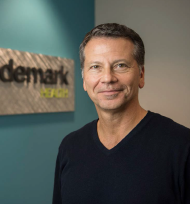 encouraging all of our clients to update their product promotions with voice search algorithms.
encouraging all of our clients to update their product promotions with voice search algorithms.
Renee Mellas.
Area 23.
Sales of smart speakers, such as Amazon Echo, Google Home, and Apple HomePod, are on the rise. The adoption rate of the always-listening assistants outpaced smartphones and tablets earlier this year and by the end of 2018 there should be 100 million of them out there. The time is certainly ripe to get to know and innovate on these platforms, especially since more than 80% of people polled “like" or “don’t mind" brand sponsored features. In what other channel do people have that kind of attitude towards advertising?
Michael Parisi.
Guidemark Health.
There is certainly potential for blockchain technologies to improve logistical efficiency and streamline clinical trial management. The promise of distributed ledger technology, blockchain, or otherwise, remains to be fully realized in our industry in a medical sense given some challenges such as privacy and sheer computing requirements.
Andrew SChirmer.
Ogilvy CommonHealth Worldwide.
In almost every other industry, corporations, companies, and marketers are realizing because of the always-on, transparent world we live in, corporate behavior, corporate value systems, and evidence of good corporate citizenry are becoming critical components of buying decisions and impacting attitudes about brands, companies, and individuals. We are moving from shareholder value to shared value. There are also massive unmet needs in both the developed and developing world around public health and other health- and wellness-related issues, often with a behavioral component. And, as Ogilvy CommonHealth is an 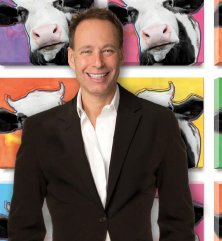 organization built on a foundation of behavior change, we have a responsibility to contribute in the broader community. Significant global problems that exist in society will not be solved by government alone or by an industry alone. Change will be the result of public/private partnerships, many of which are in place now and are already doing great things around the world. Agencies and clients have an opportunity to take all the good we do and ensure we are committed to the greater good and where there is the greatest need.
organization built on a foundation of behavior change, we have a responsibility to contribute in the broader community. Significant global problems that exist in society will not be solved by government alone or by an industry alone. Change will be the result of public/private partnerships, many of which are in place now and are already doing great things around the world. Agencies and clients have an opportunity to take all the good we do and ensure we are committed to the greater good and where there is the greatest need.
Is Advertising Still Relevant?
Given the multitude of information channels available to consumers and doctors, we wanted to know if our agency execs believe traditional brand advertising is still relevant. No surprise, they say yes, traditional brand advertising is still relevant, with some caveats.
Erin Byrne.
ghg.
Brand advertising is still very relevant provided it goes beyond pure self-promotion and seeks to offer value to the target audience groups. We find that by using advertising to present a value exchange with customers, you can develop stronger relationships that deliver far more ROI for a brand and its constituents. 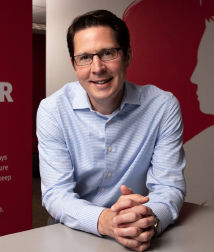 This is especially true when we go beyond advertising to create sensory experiences that best mirror how people absorb information today. This may include augmented reality, virtual reality, voice, etc.
This is especially true when we go beyond advertising to create sensory experiences that best mirror how people absorb information today. This may include augmented reality, virtual reality, voice, etc.
Sharon Callahan.
TBWA\WorldHealth.
Yes, brand advertising is still relevant if what we create on behalf of the brand can work across all those different channels.
Kerry Hilton.
HCB Health.
Traditional brand advertising is dead. Long live traditional brand advertising.
Although digital dominance has come to stay, the two still serve unique purposes.
Advertising shows up as an uninvited interruption in traditional brand communication. No one raises his or her hand to be served a print ad or a billboard.
Those placements are connected to a different mode of senses. Touch, feel, larger than life — the greatest impact comes when both traditional and nontraditional work together the way surround sound fills a room. One without the other would be like eating a peanut butter and peanut butter sandwich.
Renee Mellas.
Area 23.
In today’s world, user experience is your brand. Those moments where a human being interacts with some type of brand-constructed engagement and has all the feels — or none of the feels. It is either a good experience or a bad experience. Those are the moments that can forge the strongest impression of what a brand stands for, what a brand means. We design experiences for a multitude of channels today, that’s true, however there has to be something at the core of all  of our experience design that informs the expression of our brand essence. That is as true today as it was for Don Draper. We just have many more expressions beyond the traditional brand advertising core hallmarks that dominated the influential capacity of advertising in the past. For both consumers or doctors, the brand story needs to be consistent and positive from the first impressions offered by the iceberg-peak of the logo and brand colors, to the deep sea of engagement they’ll experience with daily adherence apps or MOA education via virtual reality.
of our experience design that informs the expression of our brand essence. That is as true today as it was for Don Draper. We just have many more expressions beyond the traditional brand advertising core hallmarks that dominated the influential capacity of advertising in the past. For both consumers or doctors, the brand story needs to be consistent and positive from the first impressions offered by the iceberg-peak of the logo and brand colors, to the deep sea of engagement they’ll experience with daily adherence apps or MOA education via virtual reality.
Steven Michaelson.
Calcium.
Traditional brand advertising is more relevant than ever. Why? Because of the multitude of information channels. Consumers and doctors are getting bombarded from everywhere. Now more than ever, the brand has to be the consistent thread, front and center, and underneath every marketing communication. The message can, and should, change per marketing channel, to adjust to the specific tactical objective, but the brand must be recognizable, regardless of whether it is traditional advertising, guerrilla marketing, or a far- reaching digital CRM program. Tiffany is still Tiffany, Nike is still Nike, and Apple is always Apple, no matter what the message is and how the consumer got it. The message is part of the brand and the brand is the message.
reaching digital CRM program. Tiffany is still Tiffany, Nike is still Nike, and Apple is always Apple, no matter what the message is and how the consumer got it. The message is part of the brand and the brand is the message.
The marketers who live this, regardless of marketing channel preference, will build an enduring and successful brand.
Ed Mitzen.
Fingerpaint.
Traditional brand advertising is only relevant if it is delivered in ways that customers want to digest it. Otherwise, it will rarely be seen and almost never have an impact.
And it’s extremely wasteful, with no real metrics to refine and sharpen. Ask yourself what will drive more brand growth — a product.com website or a campaign delivered through Alexa that, via voice activation, ships your refill directly to your home?
Michael Parisi.
Guidemark Health.
Yes, advertising is still relevant with a caveat. Beyond the continued reliance on traditional display promotion, we also see that as new mediums emerge, the pharma industry tends to apply tried-and-true strategies. A good example is applying what worked in email to messaging or traditional TV creative leveraged across mobile video platforms. We need to stop pushing more advertisements out and focus first on being relevant to our customers and connecting based on their preferences and needs.
Dr. Ahnal Purohit.
Purohit Navigation.
Even with the multiple touchpoints from which consumers and doctors obtain information today, there is still room for traditional brand advertisement and brand management. Everything for us starts with strategy — and while the end product may be a digital tool, there is still the relevance of applying that end deliverable in a format that could be printed or discussed as part of medical education.
Andrew SChirmer.
Ogilvy CommonHealth Worldwide.
The nature of what brand advertising actually is, is changing. We all see examples of this in our own lives from a consumer brand standpoint; advertising is not just about the traditional ad vehicles, it’s also about sponsorships. It’s about tools. It’s about utility. It’s about the value a brand provides beyond the actual product offering. We know from some very interesting research that in much of the world, especially in developing countries, brands are trusted more than local, regional, or federal governments. Global brands are validated in some cases more than religious leaders. Because of this, the brand construct in terms of value will never go away.
Dr. Christopher Tobias.
Dudnyk.
As long as target customers — patients, consumers, and healthcare providers — are consuming information in traditional channels, then yes advertising will be relevant. A brand will still need to differentiate, stand for one purpose, and compel a behavioral change. So, how a brand is built will not change, but how and where it is expressed will.
Frank Powers.
Elevate Healthcare.
Smart, effective advertising will always be relevant, regardless of being labeled traditional or digital.
Behind the Curtain
We wanted in on the inside track. So we asked our agency executives to tell us what they discuss when they have a chance to get together with each other peer to peer and, just as important, what they talk about with their customer peers. The answers range from healthcare complexity to value to partnership to innovation.
Sharon Callahan.
TBWA\WorldHealth.
The topic we most often discuss is how to deal with the complexity of healthcare. We’re working with a new kind of complexity overlaid by the need to be streamlined and more effective. We question how an agency helps its customers and clients deal with the complexity that they’re dealing with, and break out of the healthcare marketing silo mentality that we’ve lived in for so many years.
Kerry Hilton.
HCB Health.
The No. 1 topic that gets tossed around the HCB dinner table — with and without clients present — is the importance of lasting value and the many forms it comes in. For example, the lasting value of listening to one another to develop deeper 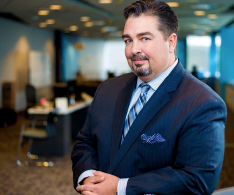 engagements; the lasting value of a well thought-out business plan; the lasting value of smart, data woven throughout a promotion; the lasting value of ownable creative; the lasting value that doctors must show patients at diagnosis. And most of all, the lasting value that patients must feel when connected with the brand that serves them.
engagements; the lasting value of a well thought-out business plan; the lasting value of smart, data woven throughout a promotion; the lasting value of ownable creative; the lasting value that doctors must show patients at diagnosis. And most of all, the lasting value that patients must feel when connected with the brand that serves them.
Renee Mellas.
Area 23.
I can’t tell you how often I’ve been in the room where it happens and heard clients say they need agencies to be active partners, who are just as passionate about the business as they are — more so. Clients are looking for agencies to come to the table on a daily basis ready to look beyond today’s budgets, schedules, and deliverables and talk about what the competition is doing, what is happening in technology, how scientific discoveries and cultural shifts are necessitating reexamination of approach. Life in our time is moving faster than ever and our industry, although burdened with vital regulatory caution, has realized that we need to find a way to keep up.
Steven Michaelson.
Calcium.
The topic most discussed with clients is centered on consistently providing innovative ideas to drive the business. At the end of the day, we are in the business of ideas, so as many things change that remains the same.
Ed Mitzen.
Fingerpaint.
Our agency, like a few others, has a division that focuses on innovation and explores technological advancements, such as artificial intelligence, voice, cloud marketing, and SMS, that can be used for improving communications to patients and healthcare practitioners. Most agencies I know are frustrated that manufacturers say they want to be cutting-edge or innovative, obviously within the guidelines, but then they often slide back to what has traditionally worked in the past. With more than half of physicians no longer seeing reps, it defies logic that there is still so much effort spent on traditional ways of reaching prescribers. Clients love it when we present a way for MOA videos to be sent via text to a prescriber or a push button at the sample closet to notify the rep to stop by the office, but these ideas rarely see the light of day due to the fear of “we’ve never done this before."
Dr. Ahnal Purohit.
Purohit Navigation.
We often discuss the diagnosis-to-treatment spectrum, as applicable to our customers, and what communication mix will activate both the healthcare provider and the patient or consumer.
Andrew Schirmer.
Ogilvy CommonHealth Worldwide.
There is a tension that exists by virtue of how much better technology is today. We’re able to do more and the turnaround for certain things is much faster. As a result, the whole time-continuum for the work we do on the agency side has been turned upside down. We’re in a period of time in which we need to rationalize what’s the appropriate time needed, from which people, to get what done. This is not an agency — only conversation. These are ongoing conversations that we are having with our procurement friends at our client companies. In the past, everyone knew the cost of creating and producing a Slim Jim, a print ad, and 12-page visual aid, and how long it usually took. We’re in a different world now and things have changed. At times, people are still using the Slim Jim-print ad-vis aid construct to determine an innovative digital engagement platform that links an app, which links to a banner ad, then to a convention panel. So the tension comes from a combination of the technology explosion and the radical change in how we work. The fact is, we’re all evolving together and we’re all trying to figure out timing, cost, and staffing as it relates to doing new work, and every year there’s something else we’re doing that we didn’t do the year before.
Talking Technology
Agency executives detail how their organizations are adapting technology — from AI to big data — to transform marketing.
Erin Byrne.
ghg.
We needn’t look any further than programmatic media for a use of AI and big data to understand how technology is changing marketing. A helpful analogy is the progression of clinical practice, from general medicine to precision medicine.
Marketing is following a similar trajectory, which is being enabled by technology. The application of machine learning to claims data, sentiment analysis, and behavioral insights allows us to model and predict customers’ behavior — as individuals, not as healthcare professionals or as patients — down to the specific person, enabling precision marketing. Technology has also changed the playing field for marketing.
Voice was not a meaningful consideration just a few years ago, but is now essential in a marketing strategy. Augmented and virtual reality are commonplace and provide novel health marketing opportunities. We will continue to see new platforms and new channels grow from niche ideas to fundamental vehicles for healthcare communications.
Steven Michaelson.
Calcium.
Big data has already transformed marketing. Asking this question in the context of pharma marketing illustrates just how far behind the curve pharma marketers are compared with the rest of the world. Pharma needs to begin to leverage big data to improve targeting. AI will allow for more robust, interactive, and personalized interaction between pharma companies and HCPs and patients. Technologies like natural language processing (NLP) will facilitate more personalized interactions.
Improved data analytics tracking will bring insight into patient and HCP engagement and behaviors, allowing for refinement of messaging and targeting.
Michael Parisi.
Guidemark Health.
Big data, or any data for that manner, is only as good as our ability to absorb it, learn from it and apply it to our clients’ business challenges. That’s where machine learning has the most potential. Intuitively, data makes us smarter as marketers with access to real-time information that can help us make better decisions about where and how to deploy and invest.
Frank Powers.
Elevate Healthcare.
Technology is a game changer and the transformation has begun. One specific example is the ability to use HIPAA-compliant data collected from thousands of sources to analyze healthcare needs and decision-making, which enables a new avenue of predictive targeting on an individual basis.
Dr. Christopher Tobias.
Dudnyk.
Technology helps us to better understand customers behaviors and develop better communications and interactions to fit their wants and needs when it comes to brand consumption. Although AI and big data are powerful tools, we still live in an age where human ideas are an absolute requirement for success.
Sharon Callahan.
TBWA\WorldHealth.
Big data will inform marketing in a much more meaningful way versus transform marketing. Big data will transform marketing in that it will provide insights down to the individual level, illustrating who responds to what kind of message when and how. As far as creating campaigns that touch people in a meaningful way, if we understand people better, then we will be much more successful and creative; the real differentiator is that we’re still a creative business. We’re not creating widgets out of data; we’re using data to create things that touch people emotionally; there’s still a lot of humanity in what we do.
Kerry Hilton.
HCB Health.
The real-time data crunching that tells us our fastest route home is also working behind the scenes to aggregate massive patient data. This means that marketing will forever be accessing what machines learn on a daily basis and serving variable content that matches the professional or patient profile. Communications will be impacted in a similar way that an app deciphers traffic data and reroutes users. It’s happening now, but the degree of variability and specificity will continue to be refined and tightened.
Dr. Ahnal Purohit.
Purohit Navigation.
Today, everyone is a digital marketer, whether or not they hold that title. Big data is an important component of understanding the strategic context of how and where brands fit within an ecosystem, but “small" data is just as important in defining subsegments, tailoring messaging, and making decisions in the present.(PV)
~~~~~~~~~~~~~~~~~~~~~~~~~
The Agency of the Future
Erin Byrne
ghg
The advertising agency of the future will bear little resemblance to the agencies of today. First and foremost, data and technology will be as prioritized and celebrated as creative is today. The output will move from ad concepts to immersive experiences. Cumbersome processes will be replaced by agile systems that allow real-time flexibility, and siloed departments will evolve to be purpose-built virtual teams that collaborate internally and externally to meet client needs. One thing that will never change is the value of great ideas, but the ideas will be even stronger due to the application of data.
Sharon Callahan
TBWA\WorldHealth
The agency of the future will still be in the business of creative ideas, and those ideas will be backed with intelligence, strategy, and data. The agency of the future, armed with deeper insights, will be to create even more powerful ideas that transform cultures, transform business, and transform lives. The agency of the future will be much simpler, more collaborative; it will be an agency that integrates disciplines such as consumer, professional, payer, medical education, public relations, and policy all under one roof.
Kerry Hilton
HCB Health
The agency of the future will be a one-stop dream factory. It will be a place where agency strategists consult with the client C-suite and develop new, imaginative business plans. The agency’s engineers will merge the big ideas of creative branding with all the possibilities that technology offers. The workflow will move fast. And tomorrow will be a different dream. Regardless of how much change and evolution our industry undergoes via technology — data, automation, curation, etc. — an unwavering foundation to any great agency still has to be an entrenched commitment to client satisfaction and results-driven solutions.
Renee Mellas
Area 23
The agency of the future will reflect the character of the employees and the culture developed to support their drive, not a specific offering or business model, that will continue to define successful agencies. That’s the future of advertising. Either that or robot overlords.
Steven Michaelson
Calcium
The agency of the future is here. If your agency hasn’t evolved, it is most likely in a panic to do so. So what does that agency look like? It’s Mad Men on steroids. Strategy and creative still guide every aspect of brand marketing, but there are so many others at the table and so many more channels to use to promote our clients’ brands. The agency of the future — or the agency of today — has all the right players/experts in place so they can holistically and responsibly market and grow clients’ brands.
Ed Mitzen
Fingerpaint
The agency of the future will be a blend of experts working at multiple locations who seamlessly team up to move brands forward and reach people at every possible touchpoint without causing interruption or annoyance. Advertising will look less like advertising and more like brand customer service in the eyes of consumers.
Michael Parisi
Guidemark Health
The agency of the future will be smaller with more diverse expertise and a greater focus on impactful communications and measurement.
Frank POWERS
Elevate Healthcare
As competition becomes fiercer for healthcare brands because of agency consolidation, the agency of the future will need talent with strategic chops to guide clients to a better place, faster. The answer to that is staffing with expertise, seniority, and vast therapeutic experience.
Dr. Ahnal Purohit
Purohit Navigation
The advertising agency of the future will include strategic capabilities as part of its DNA — brands that are midsized or smaller may not have the scope to work with management consultants on tackling strategic issues, but this is where an agency can step up and help. Advertising to the masses, much like medicine, will continue to be more targeted to the individual consumer or patient.
Andrew Schirmer
Ogilvy CommonHealth Worldwide
The successful agencies of the future are going to be big and nimble. They are going to be more virtual than location based. And I think they’re going to rely on partnerships, collaboration, and relationships more than a command-and-control workforce.
Dr. Christopher Tobias
Dudnyk
The advertising agency of the future may be far more virtual than it is today, but the principles by which we work today will remain as important as ever — high-touch client interactions, timely responsiveness, proactive strategic thinking and planning, and effective, insightful creative.
~~~~~~~~~~~~~~~~~~~~~~~~~
Advertising is Entering the Age of …
… Data-Base Authenticity
No marketing today should be undertaken without a serious regard for the data that can reveal the truth in the market and guide our creative hands. The transformation is under way.
— Renee Mellas, Area 23
… Hyper-Segmentation
Engagement data, individualized channels, social interaction, and the like will demand hyper-segmented messaging tailored to the specific needs of each individual segment.
— Steven Michaelson, Calcium
… Omnipresence
Advertising is taking place at every moment of our existence — sound, sight, touch, etc. Carving out space for our clients’ brands and ensuring their message is heard is becoming increasingly challenging in this highly competitive and saturated age of advertising.
— Dr. Christopher Tobias, Dudnyk
… Disruption
— Frank Powers, Elevate
Healthcare
… Ubiquity
— Ed Mitzen, Fingerpaint
… Value
Whereas advertising used to be about creating messages to engage the group that offers the most opportunity, today’s advertising is about creating value at the individual level. Insights gleaned from across data sources allow us to go beyond creating ads that speak to segments and instead create immersive experiences that cater to the individual.
— Erin Byrne, ghg
… Renaissance
Advertising, specifically, is entering into a period of rediscovery and rebirth.
— Michael Parisi, Guidemark Health
… Ad Infinitum
Forever and ever changing. Forever and ever everywhere.
— Kerry Hilton, HCB Health
… Attention
We went from an agrarian society to the industrial revolution to the explosion of the information revolution, and now we’re in the age of attention. We are in this strange place where every marketing dollar is vying for the limited amount of attention people have to give primarily through their mobile device. — Andrew Schirmer, Ogilvy CommonHealth Worldwide
… Unlimited Possibilities
Advertising is entering the age of unlimited possibilities, with the enablement of technology and the information that consumers seek at their fingertips.
— Dr. Ahnal Purohit, Purohit Navigation
… Reckoning
What is advertising really in today’s world? Very little of what we do nowadays is just paid and pushed. It’s all about crafting and telling the brand story, integrating the multi-channels, and near-instant engagement. It’s exciting, but it’s not advertising in its purest tradition. Let’s turn the corner.
— Joe Kuchta, The Sandbox Agency
… “We Know" vs. “We Think"
Big data is ushering us into the age of outrageous creativity in healthcare communication. Data and analytics have allowed us to access up-to-the-minute information that provides opportunities to be more creative with our approach because we understand people and we have more evidence for creativity. It’s not like previous campaigns showing people walking on the beach or staring off into space anymore…we can be much more real. For healthcare advertising, we’re finally in the 21st century.
— Sharon Callahan, TBWA\WorldHealth



